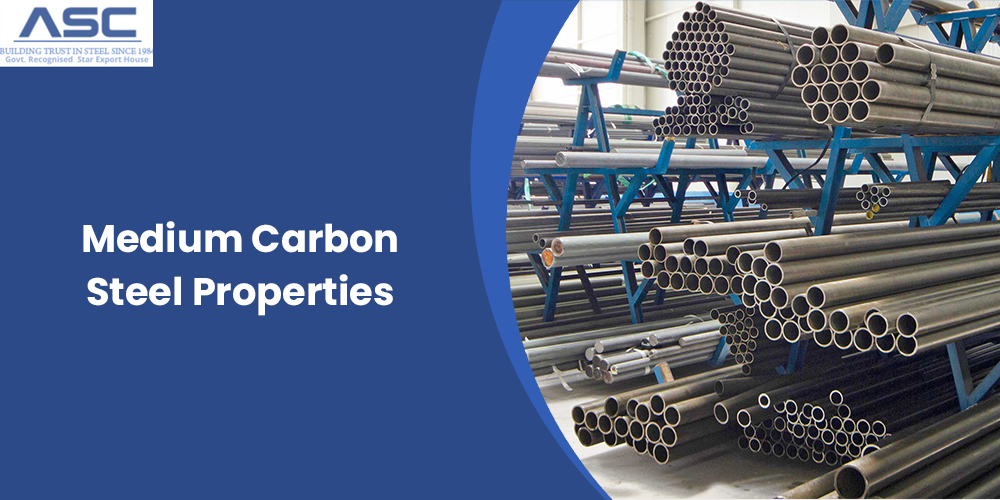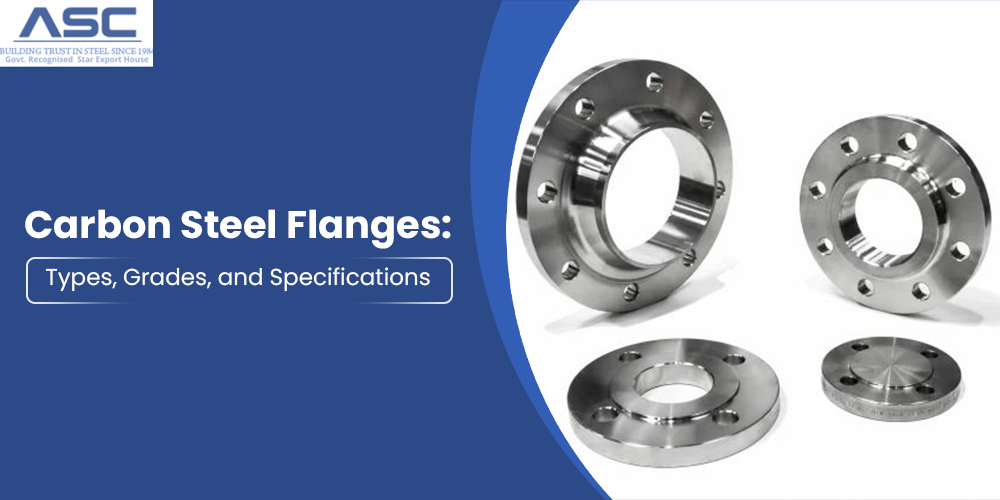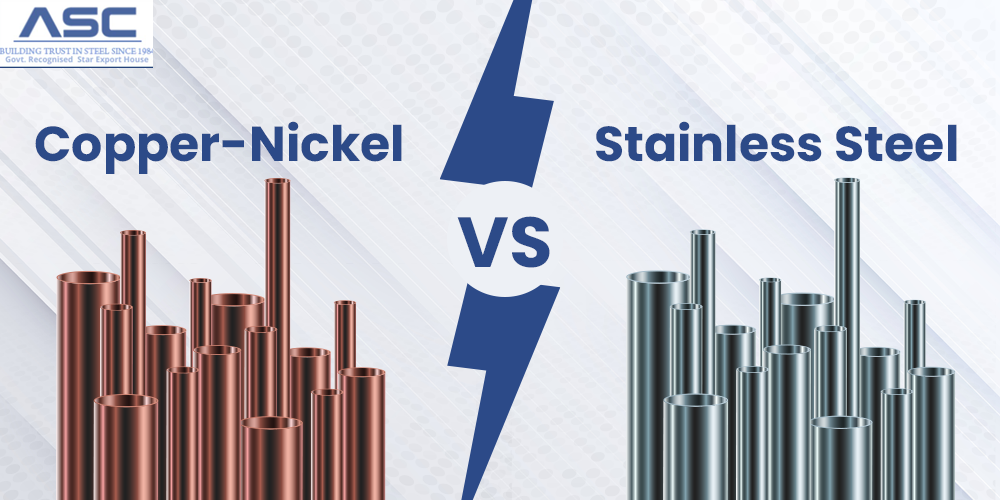Carbon Steel Properties
by AMC
Posted on October 07, 2024 at 15:40 PM

Carbon Steel
Steel is one of the most widely used and essential metals for humanity. If you look around your home, you'll notice that many items contain some form of steel. Among the various types of steel, carbon steel stands out due to its unique properties, making it highly valuable across different industries.
The characteristics of carbon steel, such as its strength, durability, and versatility, make it suitable for a wide range of applications, from construction and manufacturing to automotive and household items. Understanding the different types of carbon steel and their specific uses can help you appreciate its importance in everyday life and various sectors.
Definition of Carbon Steel
Carbon steel is a steel alloy that contains between 0.12% and 2% carbon. Any steel can be classified as carbon steel if it does not meet the certified minimum requirements for other major alloying elements.
For instance, materials such as chromium, molybdenum, cobalt, nickel, tungsten, titanium, and zirconium are not considered in carbon steel if they exceed certain limits. Additionally, steel with less than 0.4% copper is included in this category.
Furthermore, carbon steel can also refer to any steel that has more than 1.65% manganese or 0.6% copper. Essentially, any steel that is not classified as stainless steel, including various alloy steels, falls under the category of carbon steel.
Types and Properties of Carbon Steel
Carbon steel is classified into three main types based on its carbon content: low-carbon steel (also known as mild steel), medium-carbon steel, and high-carbon steel. Below is a comparison of their carbon content, microstructure, and properties:
| Type | Carbon content (%) | Microstructure | Properties | Examples |
|---|---|---|---|---|
| Low-carbon steel | 0.05 – 0.25 | Ferrite, pearlite | Low hardness and cost. High ductility, toughness, machinability and weldability | AISI 304, ASTM A815, AISI 316L |
| Medium-carbon steel | 0.30 – 0.50 | Martensite | Low hardenability, medium strength, ductility and toughness | AISI 409, ASTM A29, SCM435 |
| High-carbon steel | 0.60 – 1.00 | Pearlite | High hardness, strength, low ductility | AISI 440C, EN 10088-3 |
Characteristics and Properties of Medium-Carbon Steel
Medium-carbon steel is notable for several key features that make it advantageous in manufacturing. It is known for its strength and ductility, which make it suitable for a wide range of applications. This type of steel holds up well under heat treatment and can endure tough environments and the wear that comes with them. Our machinists prefer medium-carbon steel because it is easier to work with compared to some other steel types. The tables below detail the physical and thermal properties of medium-carbon steel.
| Property | Value |
|---|---|
|
Property
Yield Strength
|
Value
420 Mpa
|
|
Property
Hardness
|
Value
200 MPa
|
|
Property
Density
|
Value
7.75–7.89 g/cm³
|
|
Property
Magnetism
|
Value
It is typically magnetic
|
Contact Us Today To Discuss Your Carbon Steel Products Needs. Get A Custom Quote!
Carbon Steel Chemical Compositions
|
COMPONENT
|
WT. %
|
|---|---|
|
C
|
Max 0.15 |
|
Fe
|
97.91 - 98.7 |
|
Mn
|
0.85 - 1.15 |
|
P
|
0.04 - 0.09 |
|
Pb
|
0.15 - 0.35 |
|
S
|
0.26 - 0.35 |
Carbon Steel Physical Propertie
|
PHYSICAL PROPERTIES
|
METRIC
|
ENGLISH
|
COMMENTS
|
|---|---|---|---|
|
Density
|
7.87 g/cc
|
0.284 lb/in³
|
Typical for steel
|
Carbon Steel Mechanical Properties
|
MECHANICAL PROPERTIES
|
METRIC
|
ENGLISH
|
COMMENTS
|
|---|---|---|---|
|
Hardness, Brinell
|
163
|
163
|
|
|
Hardness, Knoop
|
184
|
184
|
Converted from Brinell hardness
|
|
Hardness, Rockwell B
|
84
|
84
|
Converted from Brinell hardness
|
|
Hardness, Vickers
|
170
|
170
|
Converted from Brinell hardness
|
|
Tensile Strength, Ultimate
|
540 MPa
|
78300 psi
|
|
|
Tensile Strength, Yield
|
415 MPa
|
60200 psi
|
|
|
Elongation at Break
|
10%
|
10%
|
|
|
Reduction of Area
|
35%
|
35%
|
|
|
Modulus of Elasticity
|
200 GPa
|
29000 ksi
|
Typical for Steel
|
|
Bulk Modulus
|
140 GPa
|
20300 ksi
|
Typical for Steel
|
|
Poisson's Ratio
|
0.29
|
0.29
|
Typical for Steel
|
|
Machinability
|
160%
|
160%
|
Based on 100% machinability for
AISI 1212 steel |
|
Shear Modulus
|
80 GPa
|
11600 ksi
|
Typical for Steel
|
Carbon Steel Thermal Properties
|
THERMAL PROPERTIES
|
METRIC
|
ENGLISH
|
COMMENTS
|
|---|---|---|---|
|
CTE, linear 20°C
|
11.5 µm/m-°C
|
6.39 µin/in-°F
|
|
|
CTE, linear 250°C
|
12.2 µm/m-°C
|
6.78 µin/in-°F
|
Converted from Brinell hardness
|
|
CTE, linear 500°C
|
13.9 µm/m-°C
|
7.72 µin/in-°F
|
Converted from Brinell hardness
|
|
CTE, linear 1000°C
|
14.7 µm/m-°C
|
8.17 µin/in-°F
|
Converted from Brinell hardness
|
|
Specific Heat Capacity
|
0.472 J/g-°C
|
0.113 BTU/lb-°F
|
|
|
Thermal Conductivity
|
51.9 W/m-K
|
360 BTU-in
/hr-ft²-°F |
Uses of Carbon Steel
Carbon steel is widely used across various sectors and can be categorized into four types: ultra-high carbon steel, high carbon steel, medium carbon steel, and low carbon steel.
- Ultra-High Carbon Steel: This type is known for its hardness but is also very brittle, making it unsuitable for cold working. It is commonly used to manufacture hard materials such as blades, large machine parts, cutting tools, metal lamp posts, and hot water radiators.
- High Carbon Steel: High carbon steel is known for its tensile strength and versatility. It is often used to produce cutting tools, punches, springs, high-strength wire, knives, and drill bits, making it a popular choice in various applications.
- Medium Carbon Steel: Medium carbon steel is relatively easy to machine and often has small amounts of silicon and manganese added to improve its quality. It is sometimes referred to as mild steel and is commonly used in the construction of buildings and bridges. You can also find it in gears, pipelines, refrigerators, cars, and more.
- Low Carbon Steel: Low carbon steel is typically rolled into sheets and strips. It is widely used in shipbuilding, vehicle bodies, domestic appliances, and wire production. Additionally, it is used in gates, fencing, railings, and various other applications.
Properties and Applications of Common Carbon Steel Grades
Carbon steel is available in various forms and serves many industries and sectors. Each type of carbon steel—low-carbon, medium-carbon, and high-carbon—has specific applications based on its properties:
- Low-Carbon Steel:
- Applications: Commonly used in vehicle body components, structural forms (like I-beams, channel, and angle iron), pipelines, building and bridge components, and food cans.
- Properties: Offers high ductility, good weldability, and is cost-effective.
- Medium-Carbon Steel:
- Applications: Frequently used for railway tracks, train wheels, crankshafts, and gears and machinery parts. This type is valued for its high strength, resistance to wear, and toughness.
- Properties: Balances strength and ductility, making it suitable for applications requiring durability.
- High-Carbon Steel:
- Applications: Utilized in cutting tools, springs, high-strength wire, and dies due to its excellent wear resistance and hardness.
- Properties: Highly resistant to wear but less ductile, which can make it prone to brittleness.
Properties and Applications of Common Carbon Steel Grades
Carbon steel is available in various forms and serves many industries and sectors. Each type of carbon steel—low-carbon, medium-carbon, and high-carbon—has specific applications based on its properties:
| Type | AISI/ASTM name | Carbon content (%) | Tensile strength (MPa) | Yield strength (MPa) | Ductility (% elongation in 50 mm) | Applications |
|---|---|---|---|---|---|---|
| Low | 1010 | 0.1 | 325 | 180 | 28 | Automobile panels, nails, wire |
| Low | 1020 | 0.2 | 380 | 205 | 25 | Pipes, structural steel, sheet steel |
| Low | A36 | 0.29 | 400 | 220 | 23 | Structural |
| Low | A516 Grade 70 | 0.31 | 485 | 260 | 21 | Low-temperature pressure vessels |
| Medium | 1030 | 0.27 – 0.34 | 460 | 325 | 12 | Machinery parts, gears, shifts, axles, bolts |
| Medium | 1040 | 0.37 – 0.44 | 620 | 415 | 25 | Crankshafts, couplings, cold headed parts. |
| High | 1080 | 0.75 – 0.88 | 924 | 440 | 12 | Music wire |
| High | 1095 | 0.90 – 1.04 | 665 | 380 | 10 | Springs, cutting tools |
Advantages and Disadvantages of Carbon Steel
Advantages
- Hardness and Strength: The carbon content in carbon steel provides exceptional hardness and strength, making it suitable for various applications compared to other materials.
- Flexibility: Carbon steel's flexibility makes it a preferred choice for manufacturing machinery, especially in pressing operations and other industrial uses.
Disadvantages
- Welding Challenges: Carbon steel can be difficult to weld, presenting a significant challenge for manufacturers when assembling parts or structures.
- Brittleness: While its hardness is an advantage for cutting tools, it also makes carbon steel prone to breaking under stress. Compared to specialty steels, carbon steel may not perform as well in demanding conditions.
Conclusion
Carbon steel is a versatile and essential material used across various industries due to its diverse properties and applications. From low-carbon steel, which offers excellent ductility and weldability for structural components, to high-carbon steel, known for its hardness and wear resistance in cutting tools and machinery, each type plays a critical role in manufacturing and construction.
Understanding the different grades of carbon steel allows manufacturers and engineers to select the right type for specific applications, ensuring optimal performance and longevity. As technology continues to advance, the applications and enhancements of carbon steel will likely expand, further solidifying its importance in modern industry.
With its unique combination of strength, durability, and cost-effectiveness, carbon steel remains a foundational material that supports countless sectors, from automotive and construction to energy and manufacturing.

Medium-Carbon Steel Properties
By carefully combining different elements, chemistry allows us to create variations of materials, enhancing some properties while reducing others.

